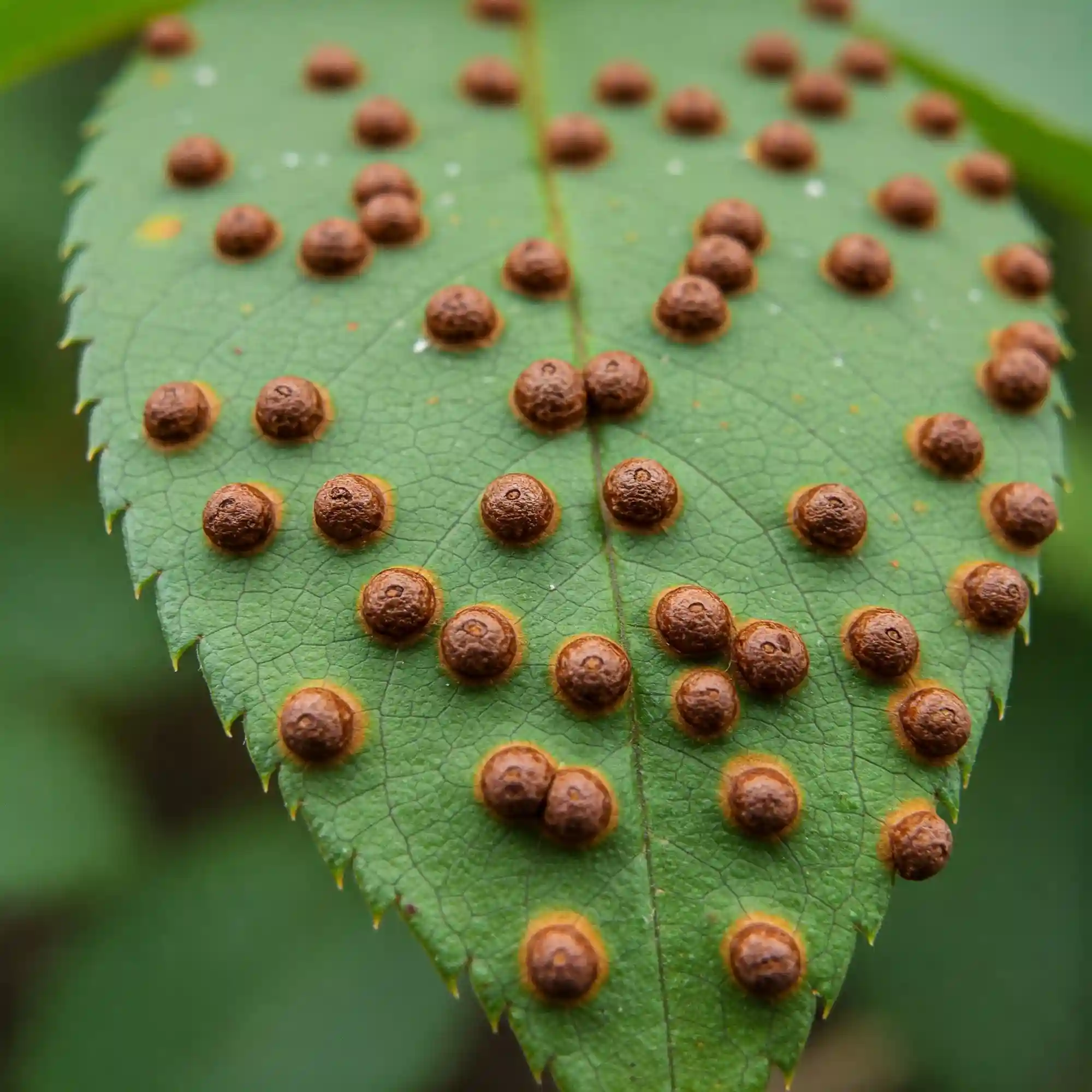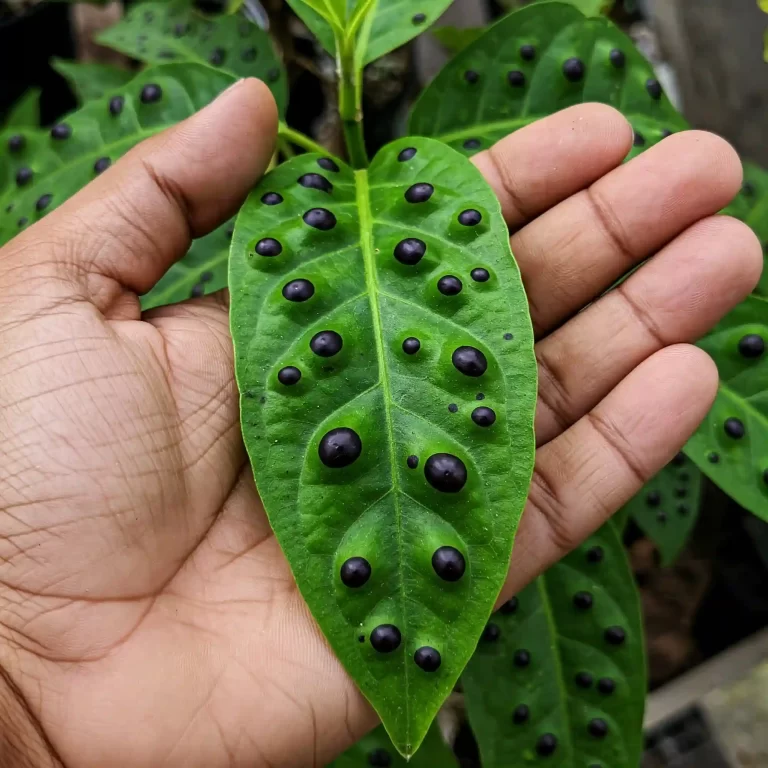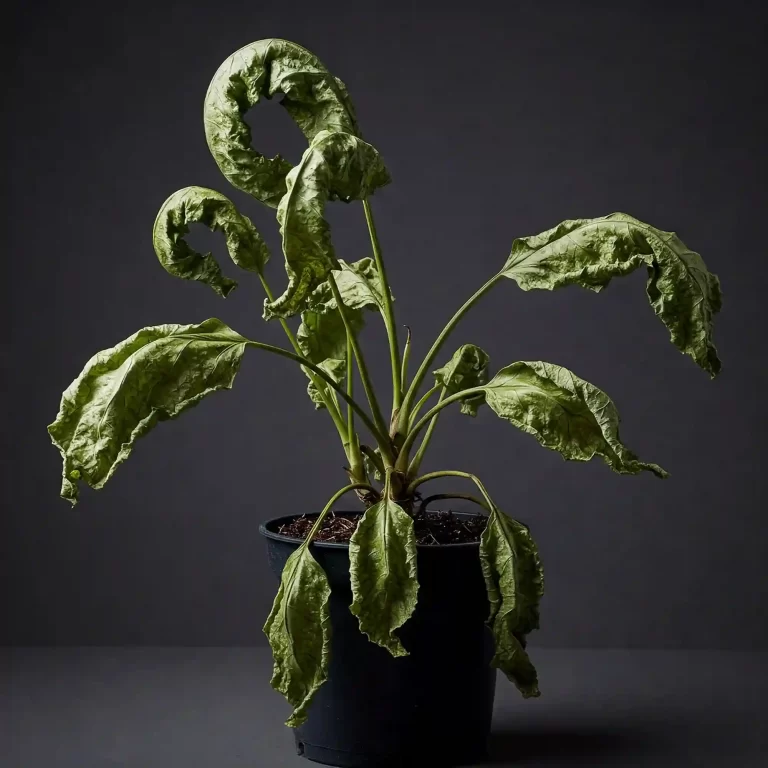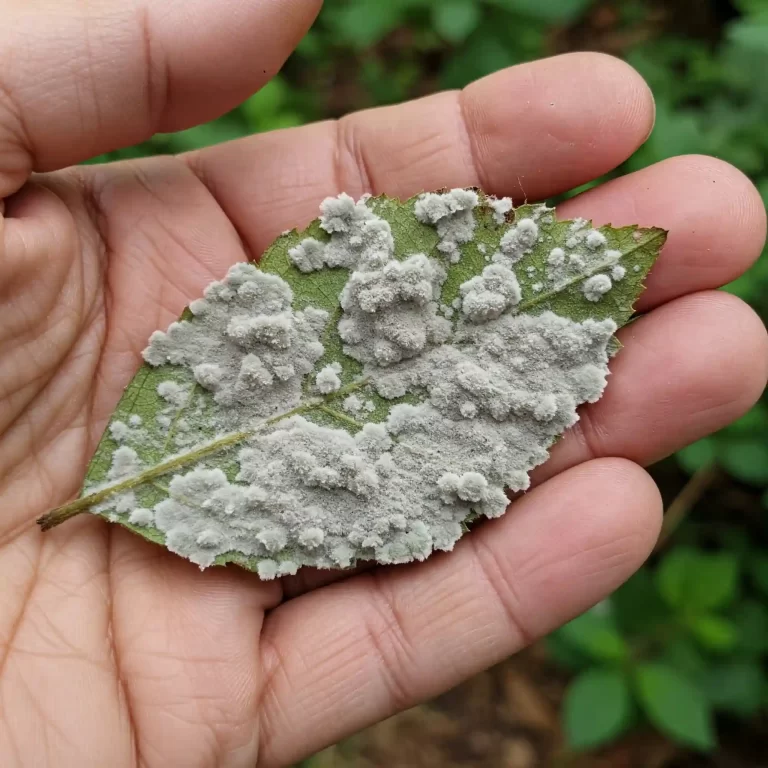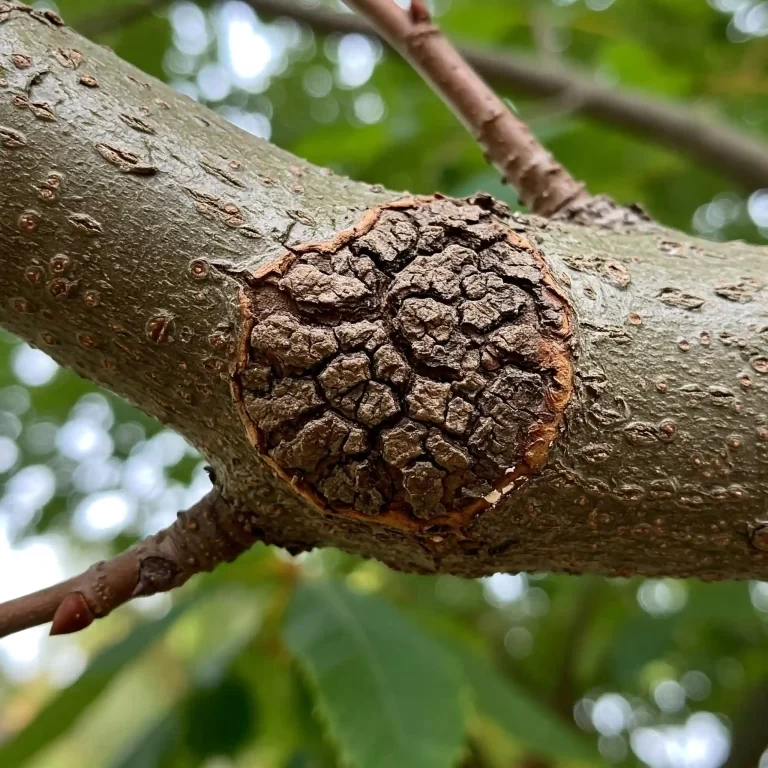Have you ever noticed unsightly brown spots popping up on the leaves of your beloved roses, sunflowers, or even your prized wheat crop? It’s a disheartening sight, isn’t it? I know how frustrating it can be to watch your plants succumb to disease, especially when you’ve poured your heart and soul into nurturing them. You’re not alone. Many gardeners face this common foe: brown rust. But don’t despair! I’ve been there, and I’ve learned a thing or two about managing this fungal nuisance. In this guide, I’ll share my experience and proven strategies to help you identify, understand, and conquer brown rust, so you can get back to enjoying the beauty and bounty of your thriving garden.
What is Brown Rust and What Does It Look Like?
Brown rust is a common fungal disease that affects a wide range of plants, including roses, wheat, and many other ornamentals and vegetables. It’s caused by various species of the Puccinia fungus, with Puccinia recondita being a particularly prevalent culprit.
Recognizing brown rust early on is crucial for effective management. The most characteristic symptom is the appearance of small, circular or oval-shaped pustules on the undersides of leaves. These pustules, typically brown or orange in color, are filled with spores, the reproductive structures of the fungus. When you see these pustules, you’re essentially looking at the fruiting bodies of the fungus.
While the undersides of leaves are the primary site of infection, you’ll often notice corresponding symptoms on the upper leaf surface. These typically appear as small, yellow or light green spots, mirroring the location of the pustules below.
As the infection progresses, the pustules may merge, creating larger, more extensive areas of discoloration. In severe cases, the affected leaves may turn brown, wither, and eventually drop prematurely. This defoliation weakens the plant, impacting its ability to photosynthesize and produce food. Stunted growth and reduced vigor are also common consequences of a severe brown rust infection.
It’s important to distinguish brown rust from other leaf diseases. For instance, black spot on roses presents as dark, irregular black spots on the leaves, while powdery mildew appears as a white, powdery coating. Accurate identification of the disease is crucial for selecting the appropriate treatment and prevention strategies.
Understanding the Causes of Brown Rust
Brown rust, like many fungal diseases, thrives in specific environmental conditions. Understanding these factors is key to preventing and controlling outbreaks in your garden. Here’s a breakdown of the key factors that contribute to the development of brown rust:
- High Humidity: Rust fungi, like most fungi, love moisture. High humidity levels create an ideal environment for spore germination and growth. This is why brown rust is often more prevalent during periods of prolonged rainfall or in areas with consistently high humidity.
- Poor Air Circulation: Stagnant air can create pockets of high humidity around plants, providing a conducive environment for fungal growth. Overcrowding plants can significantly reduce air circulation, making them more susceptible to rust infections.
- Overcrowding: When plants are planted too close together, they compete for resources like sunlight, water, and air. This can weaken the plants and make them more susceptible to diseases like brown rust. Overcrowding also reduces air circulation, creating a humid microclimate that favors fungal growth.
- Prolonged Wetness: Extended periods of leaf wetness, whether from rain, overhead watering, or heavy dew, provide the ideal conditions for rust spores to germinate and infect plants. It’s crucial to avoid overhead watering, especially in the evening, as this can leave foliage wet for extended periods.
- Infected Plant Material: Introducing infected plants into your garden can introduce brown rust to your healthy plants. Additionally, leaving infected plant debris, such as fallen leaves or stems, on the ground can serve as a source of inoculum for future infections.
By understanding these contributing factors, you can take proactive steps to create a less hospitable environment for brown rust in your garden. This includes proper spacing of plants, ensuring good air circulation, avoiding overhead watering, and promptly removing infected plant material.
Effective Brown Rust Control Strategies
Once you’ve identified brown rust on your plants, it’s crucial to take swift action to prevent its spread and minimize damage. Here are some effective control strategies that I’ve found helpful in my own gardening experience:
- Prompt Removal of Infected Material: This is the first line of defense against the spread of brown rust. As soon as you spot those telltale brown pustules, don’t delay. Prune and remove the infected leaves and stems immediately. Use clean pruning shears and make clean cuts to avoid further stressing the plant. It’s important to dispose of the infected plant material properly. Avoid composting them, as this can spread the disease. Instead, seal them in a plastic bag and discard them in the trash.
- Improve Air Circulation: Good air circulation is essential for a healthy garden environment. It helps to dry the leaves quickly and reduces the humidity levels that favor fungal growth. Prune plants to open up the canopy and increase airflow. You can also thin out dense foliage to allow for better air movement. If your plants are overcrowded, consider spacing them further apart.
- Water at the Base: Overhead watering can create a humid microclimate around the leaves, making them more susceptible to infection. Instead, water your plants at the base, directing the water to the roots where it’s needed. This helps to keep the foliage dry, reducing the risk of fungal growth. It’s also best to water early in the day, allowing the leaves to dry completely before nightfall.
- Fungicide Application: In severe cases, applying a fungicide may be necessary to control the spread of brown rust. Choose a fungicide that is specifically labeled for use on the affected plants and against rust fungi. Follow the instructions on the product label carefully, paying attention to the recommended dilution rate and application frequency. For organic gardeners, copper-based fungicides can be a good option.
- Sanitation: Good garden hygiene is crucial in preventing and controlling brown rust. Regularly remove and dispose of fallen leaves, stems, and other plant debris. These can harbor fungal spores and serve as a source of future infections. Cleaning your pruning shears with rubbing alcohol between uses can also help prevent the spread of disease from one plant to another.
By implementing these control strategies promptly and consistently, you can effectively manage brown rust outbreaks and protect your plants from further damage.
Prevention: Your Best Defense Against Brown Rust
The old adage “prevention is better than cure” holds true when it comes to combating brown rust. By creating a healthy garden environment and implementing proactive measures, you can significantly reduce the risk of this fungal disease taking hold. Here are some key preventive strategies that I’ve found effective:
- Choose Resistant Varieties: When selecting new plants for your garden, opt for varieties that are known to be resistant to brown rust. Many plant breeders have developed cultivars with enhanced resistance to this and other common diseases. This is especially important for plants that are highly susceptible to rust, such as roses.
- Maintain Plant Health: Healthy plants are better equipped to withstand diseases. Ensure that your plants receive adequate water, nutrients, and sunlight. Water your plants deeply and consistently, but avoid overwatering. Regular fertilization can help to boost plant vigor and enhance their natural defenses.
- Space Plants Properly: Avoid overcrowding your plants. Give them ample space to grow and develop. Proper spacing allows for better air circulation, which helps to dry the leaves quickly and reduces the humidity levels that favor fungal growth.
- Water Wisely: As mentioned earlier, overhead watering can create a humid environment that promotes fungal growth. Instead, water your plants at the base, directing the water to the roots. This helps to keep the foliage dry, reducing the risk of infection. It’s also best to water early in the day, allowing the leaves to dry completely before nightfall.
- Regularly Inspect Plants: Make it a habit to regularly inspect your plants for any signs of disease, including brown rust. Early detection is crucial for effective management. The sooner you identify an infection, the easier it will be to control and prevent its spread.
By implementing these preventive measures, you can create a garden environment that is less hospitable to brown rust. Remember, a healthy garden is the best defense against this and other common plant diseases.
Brown Rust on Specific Plants: Roses, Wheat, and More
Brown rust can affect a wide range of plants, causing significant damage to both ornamental and agricultural crops. Some of the most commonly affected plants include:
- Roses: Roses are particularly susceptible to brown rust, especially in humid climates. The disease can weaken the plants and reduce their overall vigor, impacting their flowering and overall health.
- Wheat: Brown rust is a major concern for wheat farmers, as it can significantly reduce crop yields. The disease can spread rapidly through wheat fields, causing significant economic losses.
- Other Cereals: In addition to wheat, other cereal crops such as barley, rye, and oats can also be affected by brown rust.
- Ornamental Plants: Many ornamental plants, including sunflowers, beans, and snapdragons, are susceptible to brown rust. This can detract from the aesthetic appeal of your garden and impact the overall health of your plants.
It’s important to be aware of the specific plants in your garden that are susceptible to brown rust. This knowledge will help you implement appropriate prevention and control measures to protect your plants. If you’re unsure about the susceptibility of a particular plant, consult a local gardening expert or refer to reliable online resources.
By understanding the plants that are most at risk, you can take proactive steps to minimize the impact of brown rust in your garden. This might involve selecting resistant varieties, providing optimal growing conditions, and implementing regular monitoring and control measures.
Frequently Asked Questions (FAQs)
Dealing with brown rust can raise many questions. Here are some of the most frequently asked questions I’ve encountered, along with my best answers based on my experience and research:
1. How to get rid of brown rust on rose bushes naturally?
While chemical fungicides can effectively control brown rust, you can also explore more natural approaches.
- Remove Infected Leaves: Prune and remove any leaves with visible signs of brown rust.
- Improve Air Circulation: Prune the rose bush to improve air circulation around the plant. This helps to dry the leaves quickly and reduces the humidity that favors fungal growth.
- Use Organic Fungicides: Copper-based fungicides are considered safe for organic gardening and can be effective against brown rust. Follow the product instructions carefully.
- Strengthen Plant Health: Ensure your rose bush receives adequate water, sunlight, and nutrients. A healthy plant is better equipped to resist diseases.
2. What are the early signs of brown rust on wheat?
Early detection is crucial for managing brown rust in wheat fields. Look for the following early signs:
- Small, yellow or light green spots: These spots may appear on the upper surface of wheat leaves, often corresponding to the location of the brown pustules on the undersides.
- Stunting of Growth: Infected plants may exhibit stunted growth compared to healthy plants.
3. Is brown rust harmful to humans if ingested from garden plants?
While brown rust itself is not typically considered toxic to humans, it’s best to avoid consuming any plant parts that are heavily infected. The presence of the fungus can make the plant less palatable and potentially introduce unwanted microorganisms into your system.
4. How often should I spray fungicide for brown rust on roses?
The frequency of fungicide applications will depend on the specific product you’re using and the severity of the infection. Generally, repeat applications may be needed every 7-10 days until the infection is controlled. Always follow the instructions on the fungicide label carefully.
5. Can brown rust kill my rose bushes if left untreated?
In severe cases, left untreated, brown rust can weaken rose bushes significantly. This can make them more susceptible to other diseases and pests, potentially leading to their decline and even death.
6. How can I tell if my plant has brown rust or another fungal disease?
Brown rust is characterized by the presence of small, round, brown to orange pustules on the undersides of leaves. Other fungal diseases may present with different symptoms. For example, powdery mildew appears as a white, powdery coating on leaves, while black spot causes dark, irregular spots. If you’re unsure about the specific disease, consult a local gardening expert or take a sample of the affected plant to your local agricultural extension office for diagnosis.
By understanding the answers to these frequently asked questions, you can effectively manage brown rust and protect your plants from this common fungal disease.
Conclusion
Brown rust can be a frustrating challenge for gardeners, but with the right knowledge and proactive measures, you can effectively manage this fungal disease and protect your plants. By understanding the causes and symptoms of brown rust, implementing proper prevention strategies, and taking swift action when necessary, you can minimize the impact of this disease on your garden.
Remember, prevention is key. Creating a healthy garden environment, choosing resistant varieties, and practicing good garden hygiene are crucial steps in preventing brown rust outbreaks. If you do encounter brown rust, don’t despair. By implementing the control strategies outlined in this guide, you can effectively manage the infection and protect your plants.
I encourage you to continue learning about plant diseases and implement sustainable gardening practices. By understanding the challenges and taking proactive steps, you can create a thriving garden that is both beautiful and resilient.
I hope this guide has provided you with valuable insights into managing brown rust. If you have any further questions or concerns, don’t hesitate to consult with local gardening experts or your county extension office. Happy gardening!
